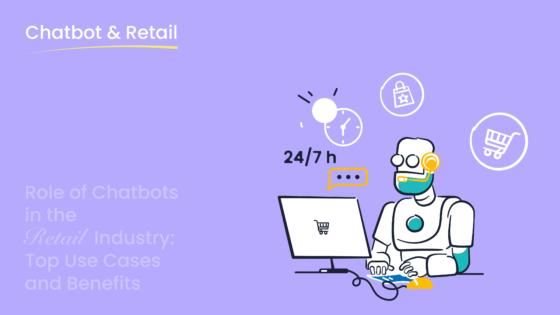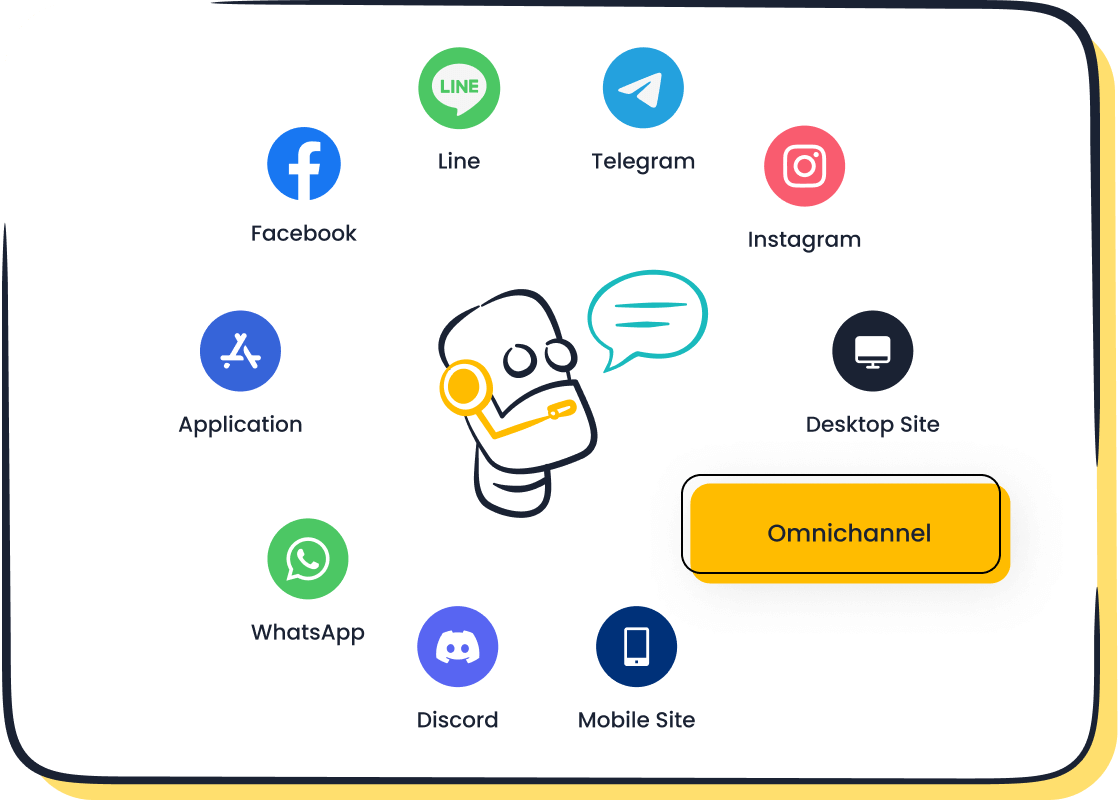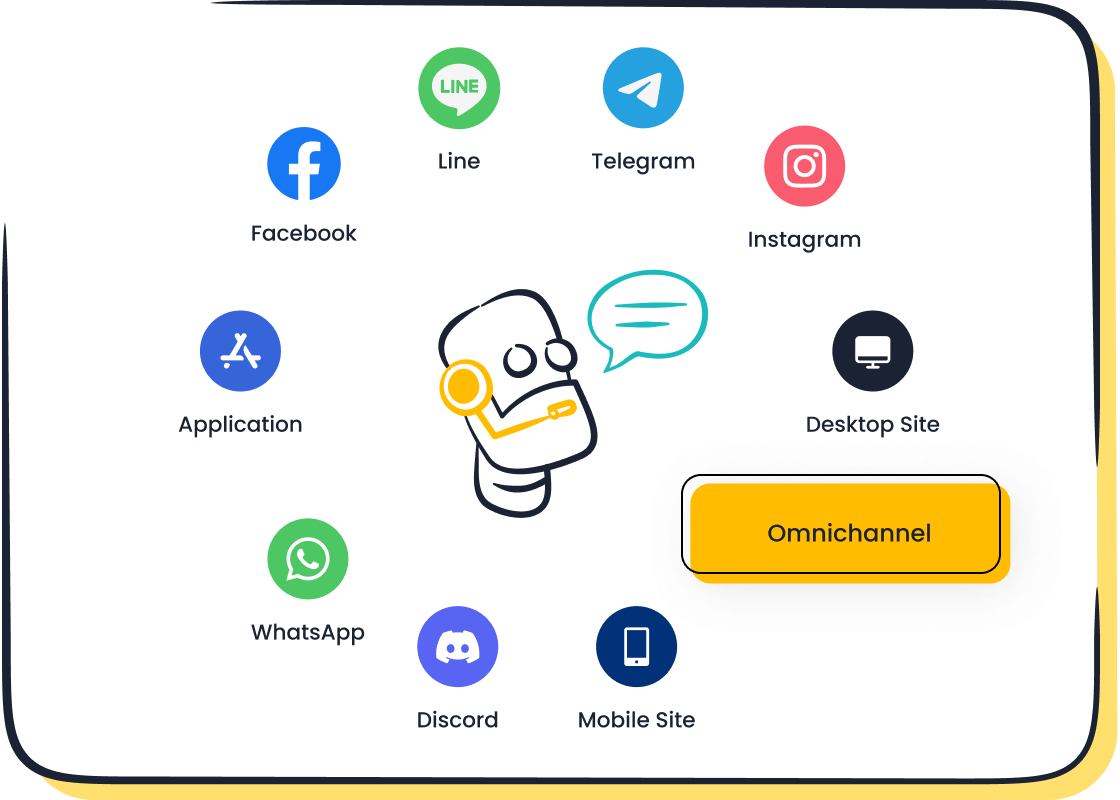Customer driven meaning in today’s trending retail world

Imagine you walk into a store and feel like every product, message, and service matches your needs. That is the power of customer driven meaning in today’s retail and ecommerce world. Customer driven meaning focuses on the needs, wants, and motivations of the target audience, rather than just selling products. You see this when businesses tailor their marketing to connect directly with you as the target audience. The difference between customer-driven and consumer-driven strategies shapes how you experience shopping. Many leaders now believe personalization is crucial for business success, with some companies generating 40% more revenue by focusing on their target audience. Sobot stands out for its customer-centric philosophy, with Sobot AI and Sobot call center solutions helping brands serve the target audience better. When you shop, ask yourself: does this brand truly understand the customer driven meaning and make you feel like the target audience?
Customer driven meaning

Definition
You live in a world where your needs and preferences shape the way businesses operate. In retail and ecommerce, customer driven meaning refers to a business model that puts you at the center of every decision. Companies use customer research and customer insights to understand what you want, how you shop, and what makes you happy. They design products, services, and experiences based on your feedback and behavior.
Today, you expect more than just products. You want brands to listen, respond quickly, and offer solutions that fit your lifestyle. Retailers use technology to collect data about your shopping habits. They analyze this information to predict what you might need next. This approach helps them create a seamless and personalized experience for you, whether you shop online or in a store.
A customer-centric business does not just react to your requests. It anticipates your needs and tries to solve problems before you even notice them. For example, when you contact a store’s support team, you want fast answers and helpful advice. Companies that follow a customer-centric approach use tools like live chat, AI chatbots, and voicebots to make sure you get the help you need right away.
Key traits
Customer-driven organizations share several important traits. These traits help them stay focused on you and deliver the best possible experience. The table below shows some of the most common traits found in customer-centric companies:
| Trait | Description |
|---|---|
| Anticipating customer needs | Companies predict what you will want or need in the future. |
| Delivering exceptional service | They focus on giving you high-quality service every time. |
| Creating brand ambassadors | They turn happy customers into fans who recommend the brand to others. |
| Incentivizing all employees | Every employee works to create value for you, not just the support team. |
| Hiring for soft skills | They look for workers who are good at talking and listening to customers. |
| Transparency | They stay open and honest about their products and services. |
You notice these traits when a company remembers your preferences, offers you special deals, or solves your problems quickly. Customer-centric businesses use customer insights to improve their products and services. They encourage every employee to think about how their work affects you. When a company hires people with strong communication skills, you feel more comfortable and valued during every interaction.
Sobot’s approach
Sobot stands out as a leader in customer-centric solutions. You see this in the way Sobot designs its products and services to meet your needs. Sobot uses AI chatbots, live chat, voicebots, and an all-in-one contact center to make your experience smooth and efficient. These tools help businesses respond to your questions at any time, in any language, and on any channel you prefer.
Sobot’s customer-centric philosophy matches the latest trends in retail. Here are some ways Sobot aligns with what you expect as a modern shopper:
- AI chatbots boost engagement by giving you personalized and emotionally intelligent responses.
- Empathetic chatbots can sense your mood and suggest products that fit how you feel, making your shopping experience more personal.
- These smart interactions help build long-term loyalty by creating emotional connections, much like the personal touch you get from top retail brands.
Sobot’s approach uses advanced technology to make your experience better. The table below highlights some features that set Sobot apart:
| Evidence Description | Key Features |
|---|---|
| Intelligent voicebot resolves customer issues independently | Human-like conversations, solves problems without needing a human agent |
| AI Agent provides personalized responses | Custom replies based on your language and keywords, no matter the channel |
| Contextual information gathering | Predicts your needs and handles common requests efficiently |
| AI-First strategy | Focuses on easy-to-use, efficient, and experience-led solutions |
| Omnichannel integration | Connects all your interactions across websites, apps, and social media |
You benefit from Sobot’s customer-centric approach because it brings together all your interactions in one place. Whether you reach out through WhatsApp, email, or a website, Sobot’s system keeps your information connected. This means you do not have to repeat yourself, and you get faster, more accurate help.
Sobot’s solutions, like the AI chatbot and omnichannel contact center, help businesses anticipate your needs and deliver exceptional service. By using customer insights and focusing on engagement, Sobot helps companies turn you into a loyal customer and even a brand ambassador. You experience the results through quick responses, personalized offers, and consistent support across every channel.
Consumer-driven explained
What is consumer-driven
You often hear the term consumer-driven in retail. This approach means that businesses shape their strategies based on your behavior as a consumer. Companies study how you shop, what you buy, and what you like. They use this information to create products, services, and marketing that match your habits.
When a business follows a consumer-driven model, it pays close attention to trends in the market. You see companies changing their products quickly when they notice new interests among shoppers. They use data to understand what you want and when you want it. This helps them offer the right products at the right time.
When retailers align their strategies with consumer behavior insights, they create a shopping experience that feels personal and relevant. This approach can drive you to make quick purchases and build a long-term relationship with the brand.
You benefit from this because companies can predict what you might need next. They send you personalized messages and place products where you are most likely to see them. This makes shopping easier and more enjoyable for you.
- Retailers who analyze consumer behavior develop data-driven strategies that match your expectations and build loyalty.
- Companies use these insights to respond to new trends and keep you interested.
- Understanding consumer behavior lets brands create marketing messages and product placements that boost engagement and sales.
Consumer-driven brands
Many companies today use a consumer-driven approach. These brands listen to you and change their strategies based on your feedback and shopping habits. Here are some well-known consumer-driven brands and the strategies they use:
| Brand | Strategy Description |
|---|---|
| Lululemon | Builds a community through grassroots marketing and local ambassadors, focusing on sustainability and ethics. |
| Everlane | Uses radical transparency by showing the true cost of products, building trust with consumers. |
| The Ordinary | Offers simple product names and clear marketing, making it easy for you to understand what you are buying. |
You notice that these brands focus on what matters to you as a consumer. They build trust by being open and honest. They also create communities that make you feel like part of something bigger.
Differences from customer-driven
You might wonder how consumer-driven and customer-driven approaches differ. The main difference lies in the focus. A customer-driven approach centers on understanding your needs and desires as a customer. It uses detailed analysis of who you are and what you want. A consumer-driven approach, on the other hand, looks at your behavior as part of a larger group and responds to trends in the market.
Here is a table to help you see the differences:
| Aspect | Customer-Driven Approach | Product-Driven Approach |
|---|---|---|
| Emphasis | Focuses on understanding customer needs and desires. | Focuses on creating a superior product. |
| Development | Uses demographic analysis and buyer personas. | Emphasizes product features and development processes. |
| Agility | Responds quickly to changing customer needs. | May have an edge in product quality. |
You can see that both approaches use consumer insights, but they do so in different ways. A consumer-driven strategy looks at broad trends and group behavior. A customer-driven strategy digs deeper into your personal needs and feedback. Both can help companies succeed, but they shape your shopping experience in unique ways.
Customer-driven business vs. consumer-driven
Key differences
You might wonder how a customer-driven business stands apart from a consumer-driven one. The difference starts with the way each business listens to you and acts on your needs. A customer-driven business puts you at the center of every decision. You see your feedback shape products, services, and even the way a company communicates. In contrast, a consumer-driven business looks at broad trends and group behaviors. It responds to what most people want, but it may not always meet your personal needs.
Here are some key differences between these two models:
- A customer-driven business creates products based on your existing needs. It wants to fulfill those needs better than anyone else.
- A consumer-driven business develops products based on internal ideas, hoping you will want them.
- In a customer-driven business, every part of the company works together to deliver value to you. In a consumer-driven business, the focus often stays on product development and cost.
- Customer-driven businesses engage with you directly for feedback. They use your opinions to improve.
- The main goal of a customer-driven business is to align products and services closely with your needs and wants.
You can see these differences in action when you look at companies like Starbucks, Amazon, Ritz-Carlton, and Disney. These brands focus on creating personalized experiences and building strong customer relationships. Their approach leads to high loyalty and steady growth.
"The study highlights the relationship between service quality, client satisfaction, and client retention, emphasizing that improvements in service quality directly influence customer satisfaction and, consequently, customer loyalty. Additionally, the integration of user-generated content and online reviews is shown to enhance understanding of customer experiences, further supporting the effectiveness of customer-driven strategies."
When you interact with a customer-driven business, you feel heard and valued. Your feedback matters, and you notice changes based on what you say. This approach builds trust and long-term customer relationships.
Customer-centric focus
A customer-driven business always keeps a customer-centric mindset. This means every decision, from product design to marketing strategy, starts with you in mind. You see this culture in the way employees treat you, the way products fit your needs, and the way support teams solve your problems.
A customer-centric culture shapes the whole organization. It does not stay in one department. Every team, from sales to support, works together to make your experience better. When a business puts you first, it becomes more responsive to changes in the market. You get products and services that match your lifestyle and expectations.
A customer-driven business uses your feedback to guide innovation. You help shape new products and features. This process reduces the risk of product failure and increases your loyalty. When you see your ideas become reality, you feel connected to the brand.
Sobot builds its solutions around this customer-centric focus. With Sobot’s omnichannel contact center, you can reach out on any channel—WhatsApp, live chat, phone, or email. Sobot’s AI chatbot listens to your questions and gives you instant, personalized answers. The system remembers your preferences and connects all your interactions, so you never have to repeat yourself.
A customer-driven business also values transparency. You always know what to expect. The company keeps you informed and invites you to share your thoughts. This open communication helps build strong customer relationships.
Impact on service
The impact of a customer-driven business on service quality is clear. You get faster, more accurate, and more personal support. When a business listens to you and acts on your feedback, you feel satisfied and loyal. This satisfaction leads to long-term customer relationships and higher retention rates.
"The fourth implication of this study stresses the effectiveness of user-generated content in understanding clients' experiences. Online reviews offer valuable insights into user needs for CRM systems by presenting a rich source of feedback and opinions from real users, helping organizations gain a deeper understanding of customer preferences, pain points, and expectations."
Sobot’s solutions show how a customer-driven business can transform service. For example, Samsung used Sobot’s all-in-one contact center to unify its communication channels. This change led to a 30% increase in agent efficiency and a 97% customer satisfaction rate. Sobot’s AI chatbot answers questions 24/7, in multiple languages, and across all your favorite apps. You get help whenever you need it, without waiting.
A customer-driven business also improves financial results. When you feel valued, you stay loyal and recommend the brand to others. This loyalty leads to higher profits and steady growth. The table below shows how a customer-driven business compares to a consumer-driven one in terms of long-term profitability:
| Approach | Long-term Profitability | Customer Loyalty | Retention Rate |
|---|---|---|---|
| Customer-driven business | High | Strong | High |
| Consumer-driven | Moderate | Variable | Moderate |
You can see that a customer-driven business delivers better results over time. By focusing on your needs, it builds strong customer relationships and drives revenue growth. Sobot’s customer-centric solutions help businesses achieve these results by making every interaction count.
A customer-driven business also uses your feedback to improve products and services. This process leads to better innovation and higher satisfaction. When you share your experiences, the company listens and adapts. You become part of the brand’s success story.
Benefits of customer-centric strategies
For retailers
When you use a customer-centric strategy, you see clear benefits for your business. You can better understand customer pain points and respond to changing needs. This approach helps you build stronger relationships and increase customer loyalty. Many top brands show how customer-centric thinking leads to success:
- Nordstrom listens to customer feedback and changes its products and services to match customer needs. This increases customer satisfaction and engagement.
- Costco’s high Net Promoter Score (NPS) shows that customer-centric practices improve margins and boost Customer Lifetime Value.
- Nike uses feedback to adjust products for different regions, which leads to higher sales and better alignment with local needs.
You can measure the impact of a customer-centric strategy with key metrics:
- Repeat purchase rates show how loyal your customers are.
- Net Promoter Score (NPS) measures how likely customers are to recommend your brand.
- Average Order Value (AOV) shows how much customers spend each time they shop.
Sephora’s personalized recommendations and targeted promotions have increased both loyalty and average spend per visit. This proves that focusing on customer needs drives revenue and growth. Learn more about NPS and retail success.
For customers
You benefit from customer-centric strategies in many ways. When companies listen to your feedback, they fix problems and improve your experience. You get products and services that match your needs and preferences. Businesses use different feedback channels to understand what matters to you. This leads to more personal and engaging experiences.
- You see companies use your feedback to make real changes.
- Personalized experiences make you feel valued.
- Feedback loops show that brands care about your needs and want to improve.
A customer-centric approach builds trust and credibility. You are more likely to stay loyal and recommend the brand to others. The table below shows how customer-driven strategies help you:
| Benefit | Description |
|---|---|
| Trust and credibility | You trust brands that listen and respond to your needs. |
| Loyalty & recommendations | You become a repeat customer and share your positive experience. |
| Better experience | You enjoy services and products that fit your needs and lifestyle. |
| Engagement | You feel more connected to the brand throughout your customer journey. |
Sobot Chatbot in action

Sobot’s AI-powered Chatbot shows how a customer-centric strategy works in real life. Samsung used Sobot’s all-in-one contact center to connect all customer channels and improve service. The Chatbot answered questions 24/7, in many languages, and handled common needs quickly. Agents focused on complex issues, which improved efficiency by 30%. Samsung reached a 97% customer satisfaction rate and built stronger customer loyalty. You get faster answers, less waiting, and a better overall customer experience. Sobot’s Chatbot helps you at every step of your customer journey, making sure your needs always come first. See Samsung’s story.
How to build a customer-driven business

Practical steps
You can build a customer-driven business by following clear, actionable steps. Start by understanding your customers. Talk to them, listen to their problems, and learn what matters most. Organize your notes after each conversation and highlight the key takeaways. Always thank your customers for their time and follow up on any issues they mention.
The biggest mistake many founders make is coming to customer interviews without preparation.
To make your approach effective, focus on three main areas:
- People: Know who your customers are.
- Problems: Understand the challenges they face.
- Your Solution: Show how your products or services solve these problems.
A customer-centric organisation always keeps feedback at the center. Create a feedback loop where you collect, analyze, and act on customer input. Make this an ongoing process, not a one-time task. Use multiple channels like phone calls, live chat, email, and messaging to reach your customers. Each channel offers unique benefits, such as high satisfaction from phone calls and fast responses from live chat.
Sobot solutions
Sobot helps you become a customer-centric organisation by offering omnichannel and AI-powered solutions. With Sobot, you can connect with customers across phone, chat, email, and messaging apps. This creates a seamless experience and keeps all customer data in one place. Sobot’s AI Chatbot answers questions 24/7, in many languages, and handles up to 70% of interactions without human help. This boosts customer satisfaction and saves time for your team.
Retailers using Sobot see higher customer retention rates and improved satisfaction. Generative AI in Sobot’s platform helps you deliver consistent service across every channel. By 2025, AI is expected to handle most customer interactions, making your business more efficient and responsive.
Measuring success
To know if your customer-driven strategy works, track key metrics. Important measures include:
- Customer churn rate
- Net Promoter Score (NPS)
- Customer Satisfaction Score (CSAT)
- Customer Lifetime Value (CLV)
- Monthly Recurring Revenue (MRR)
- Customer Health Score
Customer lifetime value tells you how much revenue you can expect from each customer over time. High NPS and CSAT scores show that your customers are happy and likely to stay loyal. Use these numbers to guide your decisions and keep improving your service.
You now see the difference between customer-driven and consumer-driven strategies. Customer-driven businesses focus on your needs and build loyalty. Consumer-driven brands follow trends and group behavior. Companies that put you first grow faster and keep you coming back.
| Fact | Impact |
|---|---|
| 60% more profitable | Customer-centric companies outperform others [source] |
| 3.5x faster revenue growth | Service-focused businesses grow quickly [source] |
Sobot helps you make this shift. For example:
- OPPO improved satisfaction and cut costs with Sobot’s AI chatbot.
- Centralized platforms made communication easy and personal.
In the next five years, you will see more AI, personalization, and sustainability in retail. Explore Sobot’s solutions to lead in this new customer-driven world.
FAQ
What does customer driven meaning refer to in retail?
Customer driven meaning describes how you shape business decisions. Retailers listen to your needs, use your feedback, and create products or services that match your expectations. You see this approach in personalized shopping experiences and responsive customer support.
How does customer driven meaning improve your shopping experience?
You get faster answers, personalized recommendations, and products that fit your lifestyle. Retailers use customer driven meaning to predict your needs and solve problems before you notice them. This leads to higher satisfaction and loyalty.
Why is customer driven meaning important for retailers?
Retailers who focus on customer driven meaning build stronger relationships with you. They increase repeat purchases and boost Net Promoter Scores. Studies show customer-centric companies are 60% more profitable than others. See more data.
How can you tell if a brand uses customer driven meaning?
Look for brands that ask for your feedback, offer tailored promotions, and solve your issues quickly. You notice customer driven meaning when you feel valued and understood during every interaction.
What tools help retailers achieve customer driven meaning?
Retailers use AI chatbots, omnichannel contact centers, and data analytics. These tools help them understand your preferences, respond instantly, and create seamless experiences. Sobot’s solutions support customer driven meaning by connecting all your interactions.
See Also
Selecting Live Chat Solutions for Retail Businesses
Enhancing Live Chat Features for Retail Success
Excelling at Live Chat Strategies for Retail
